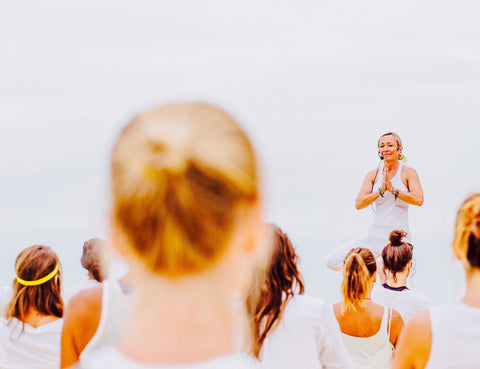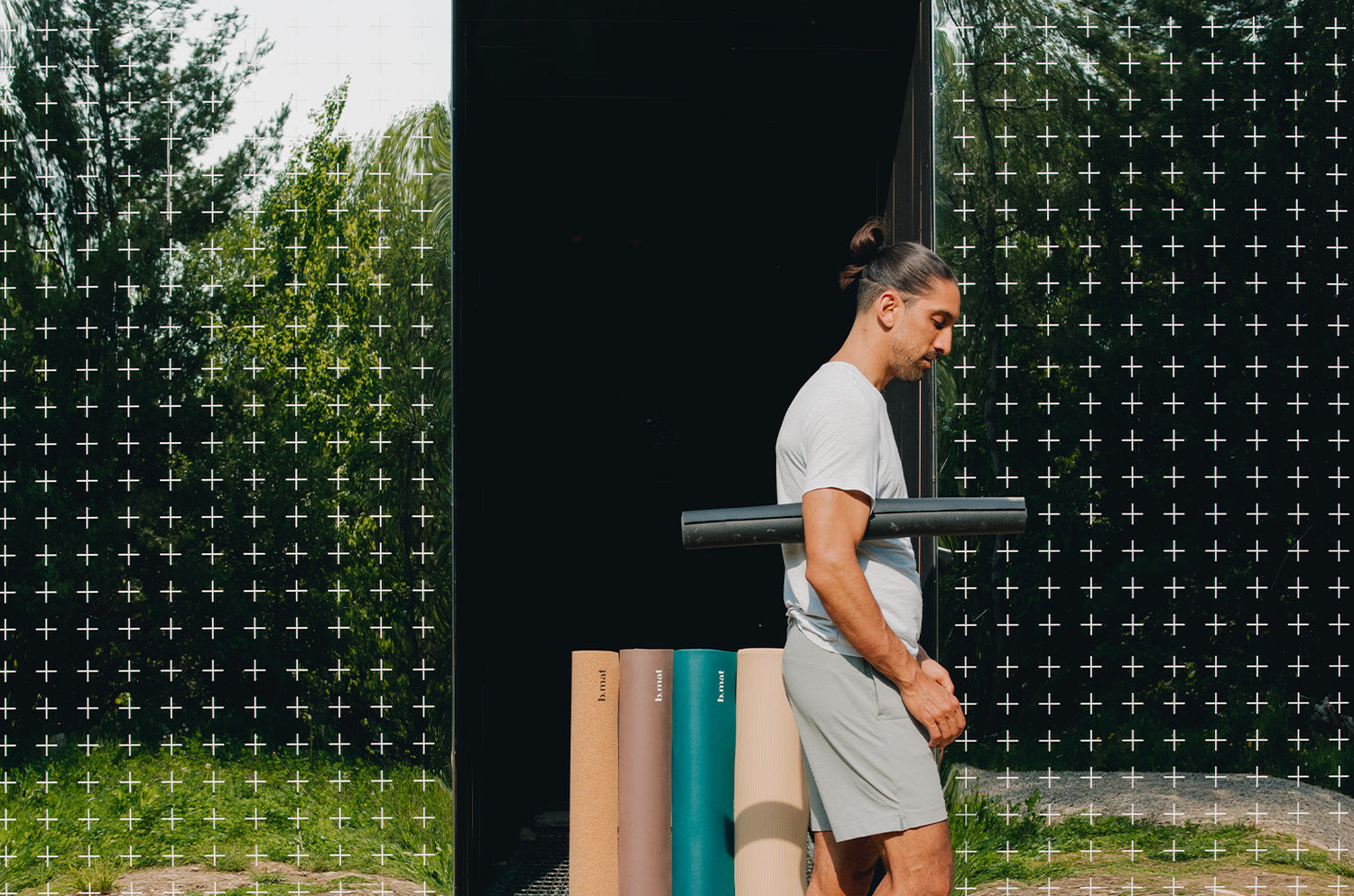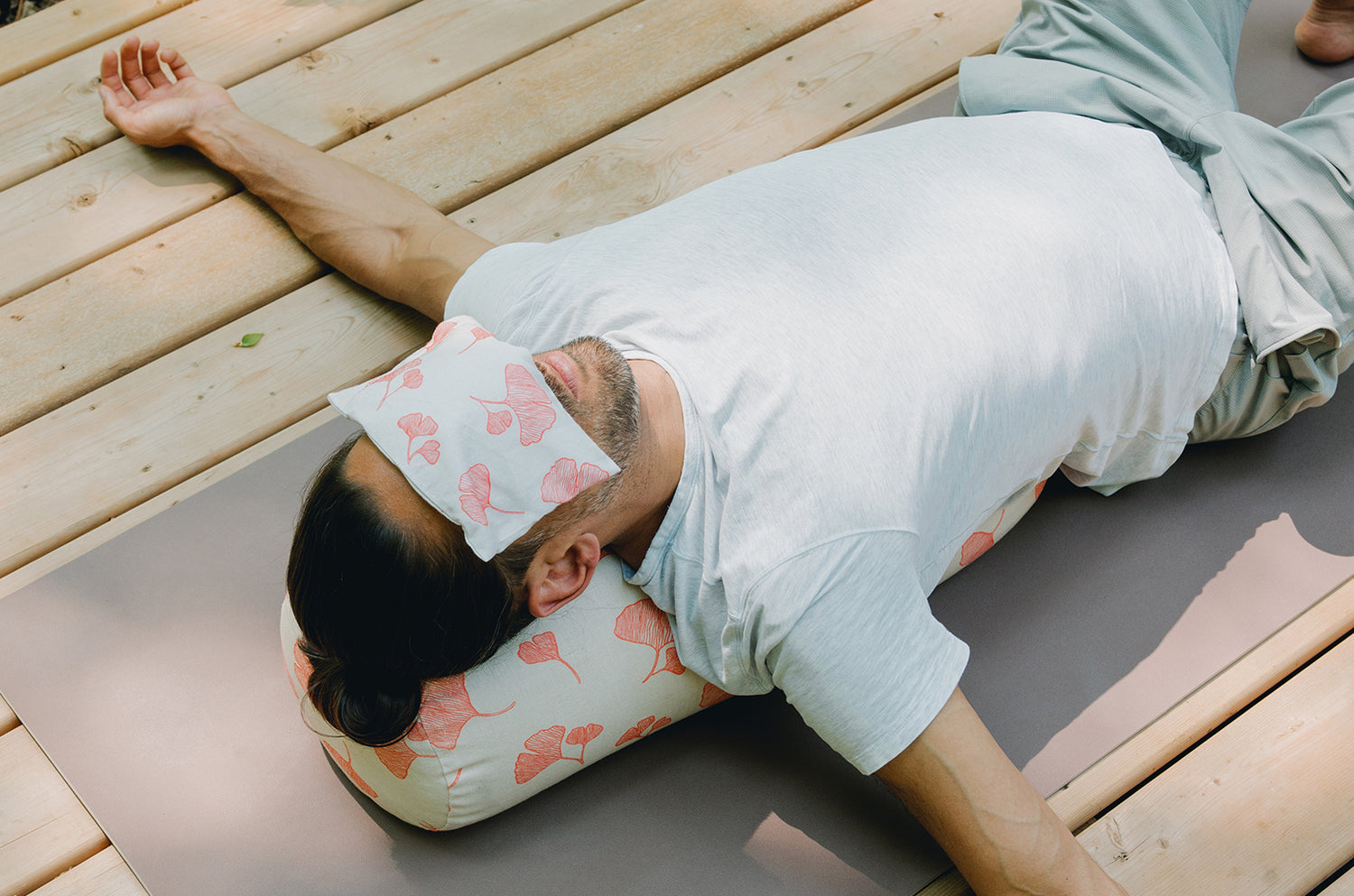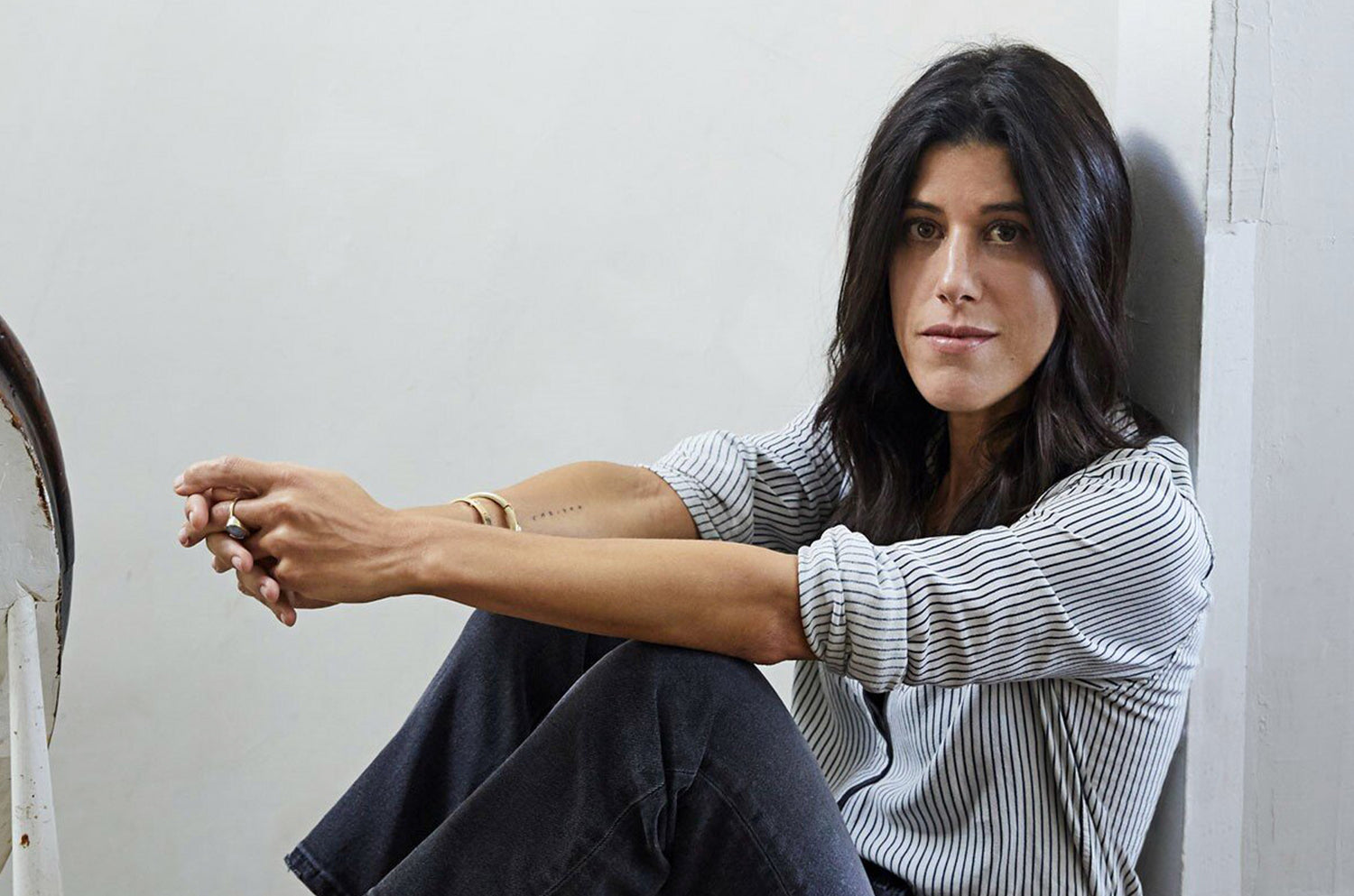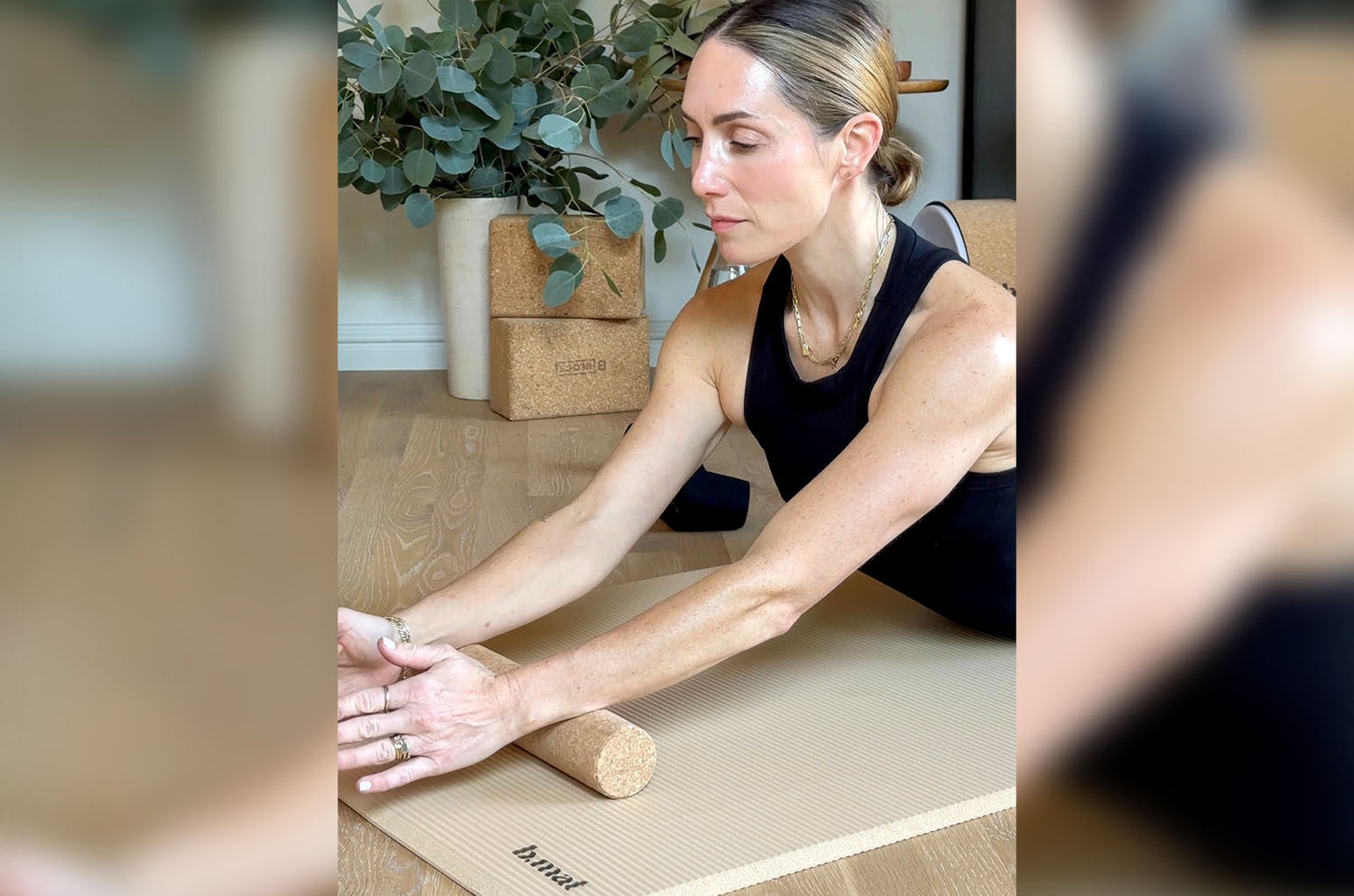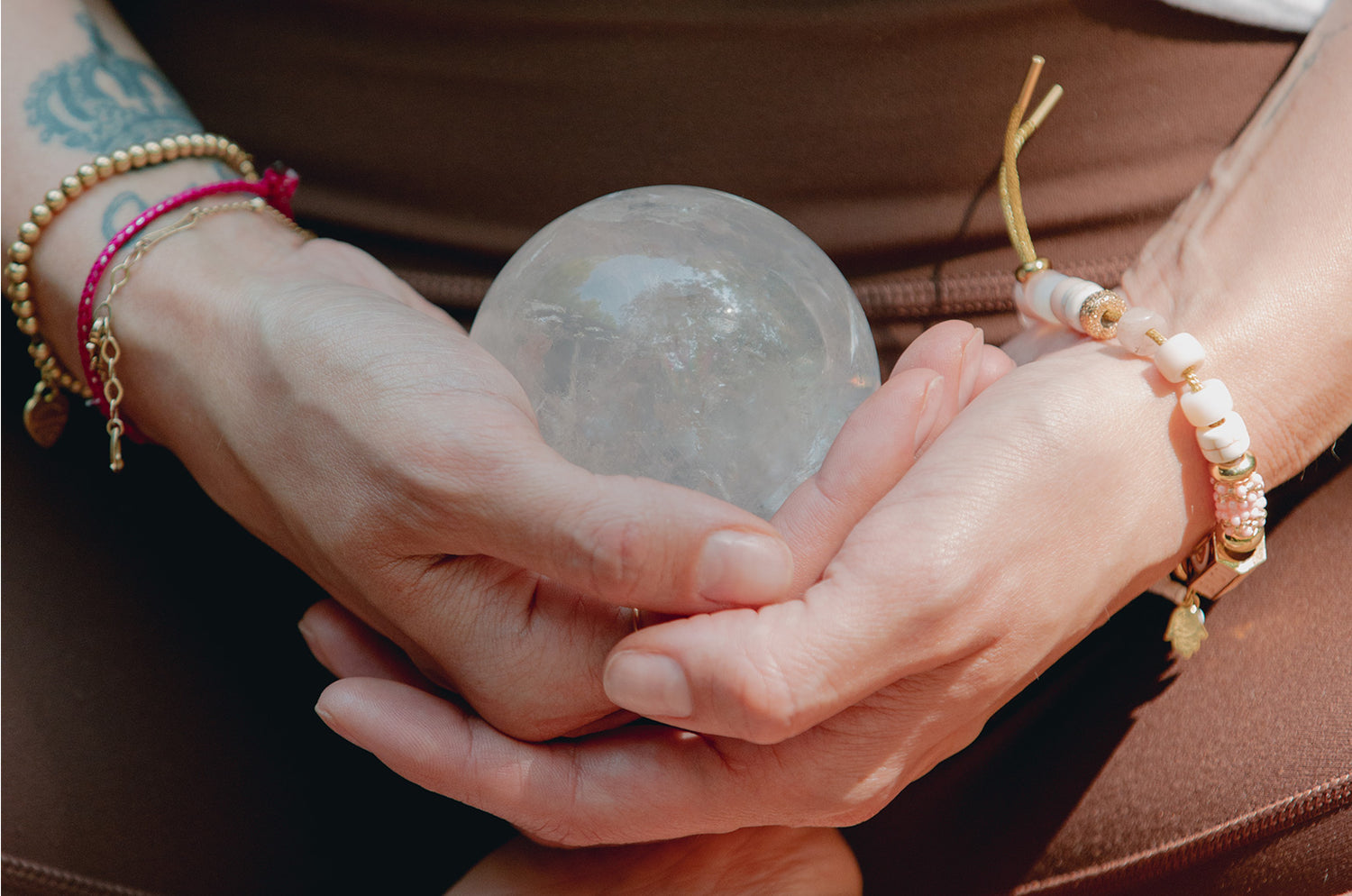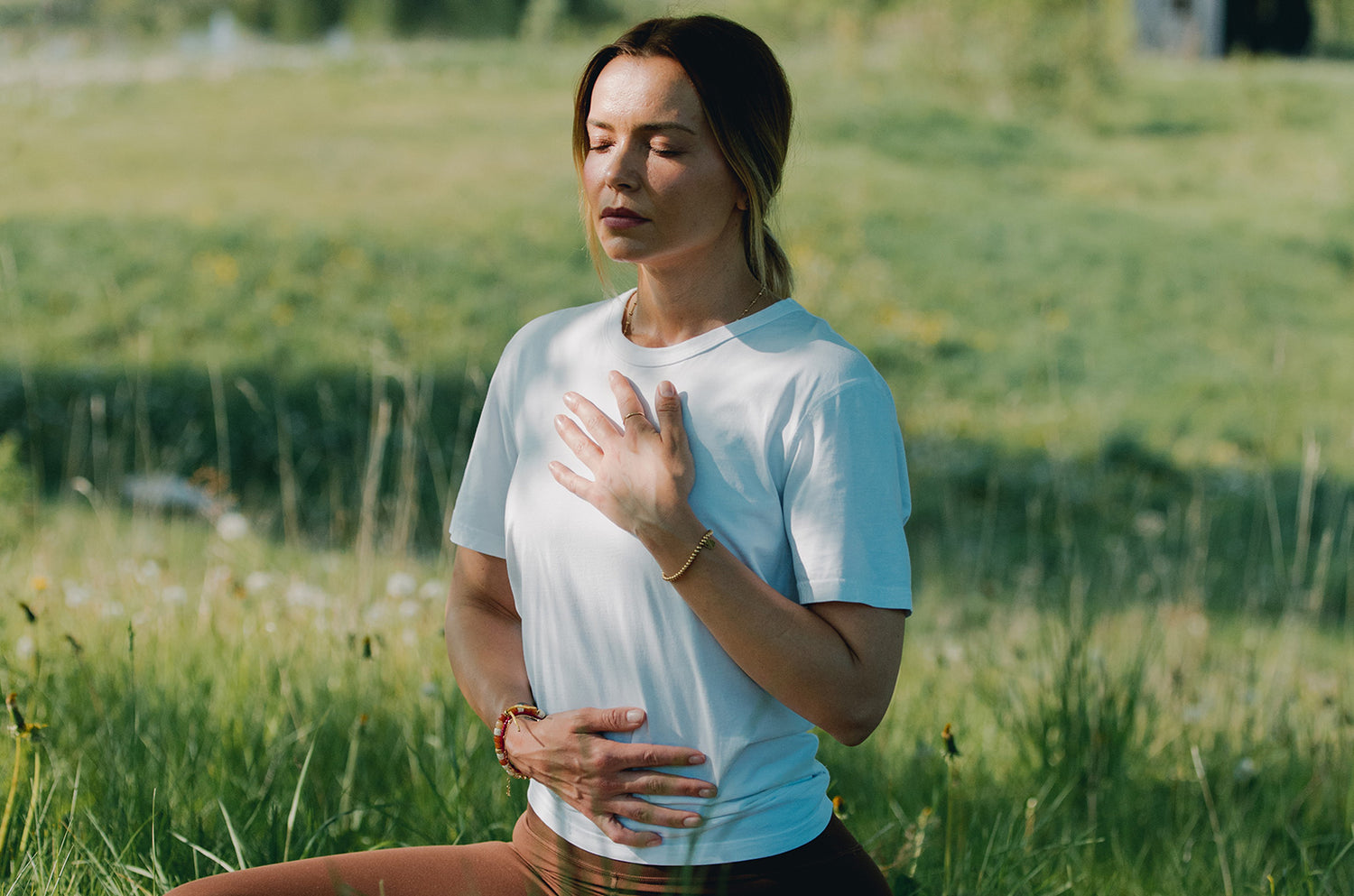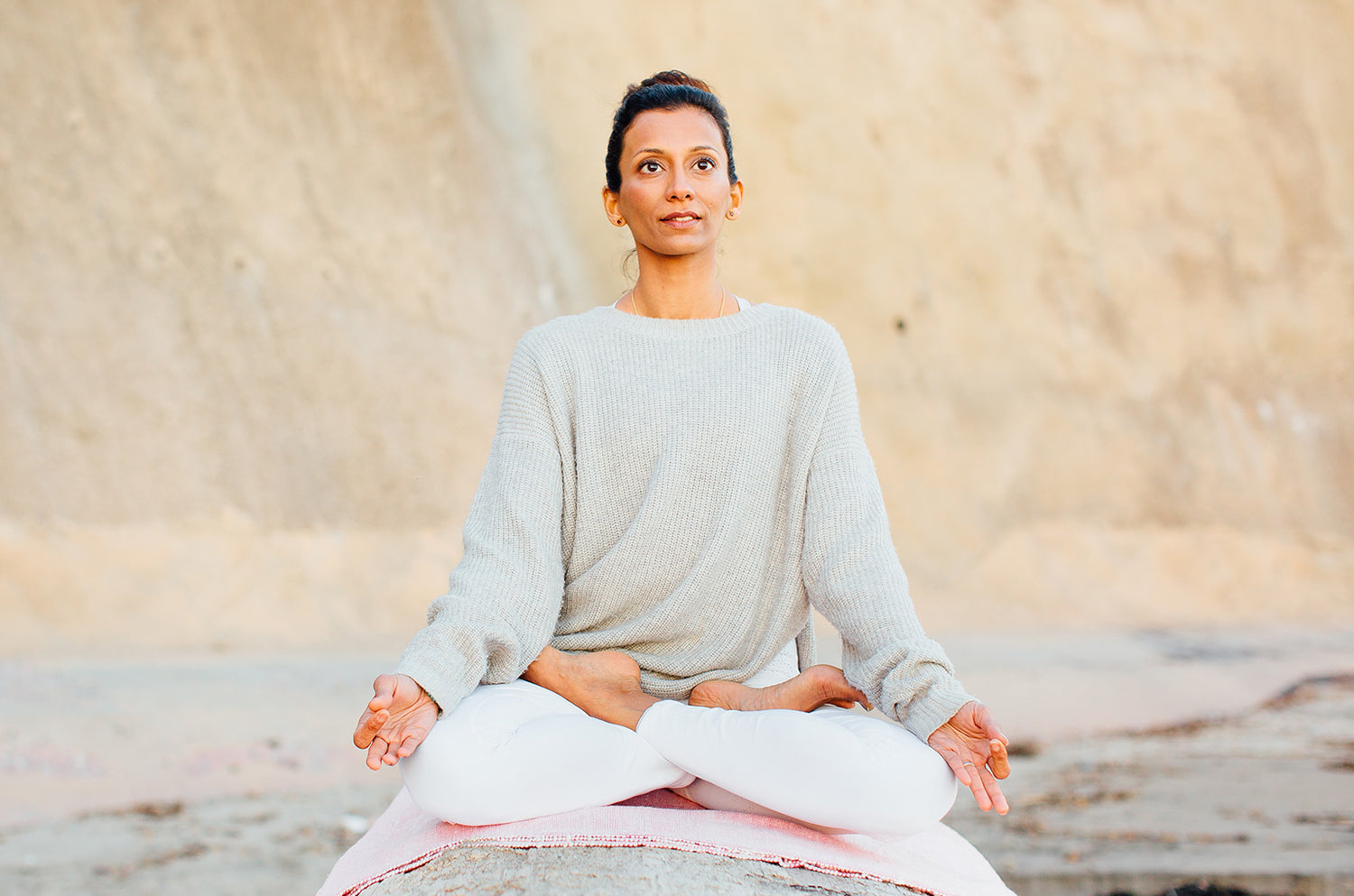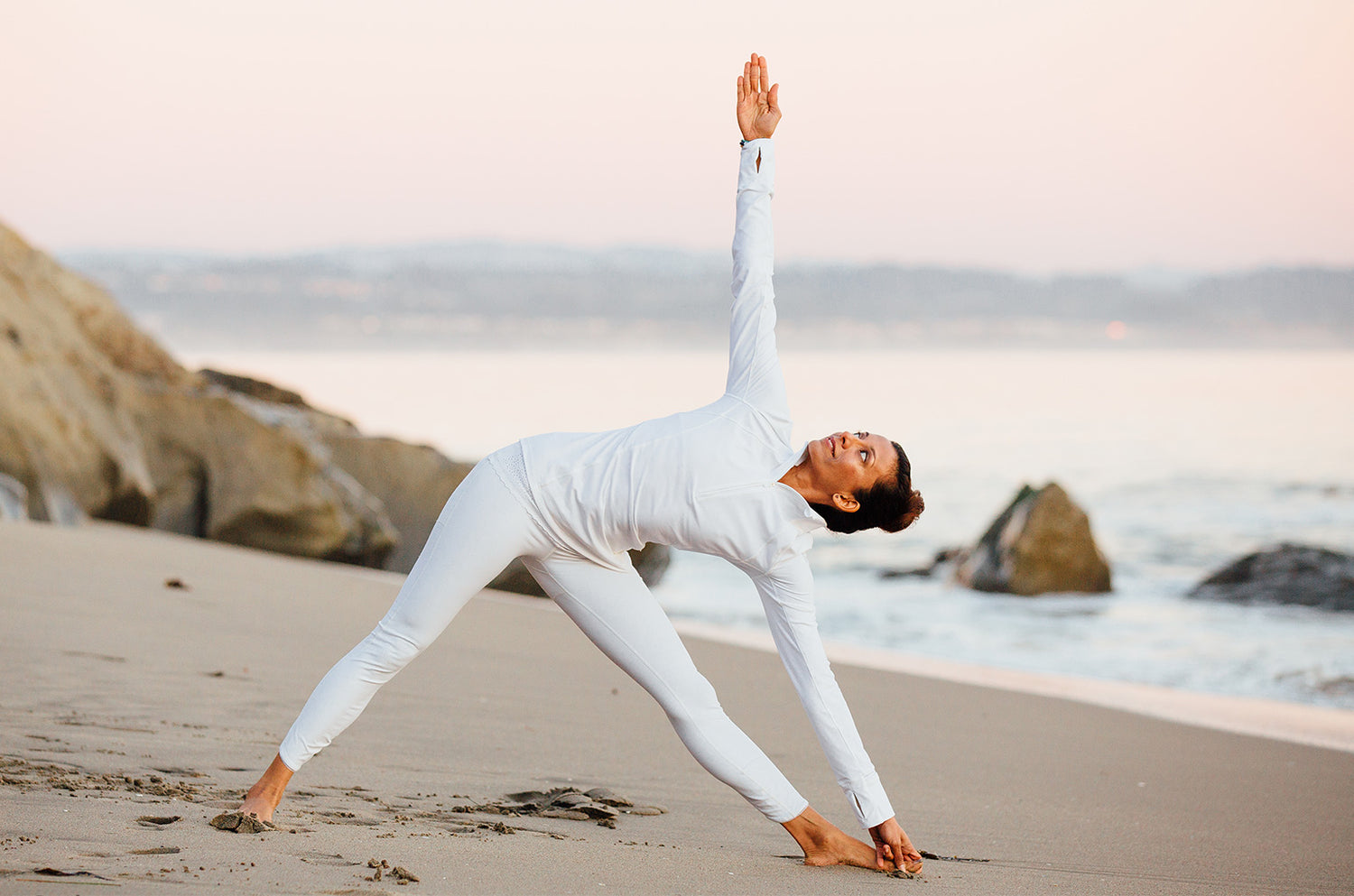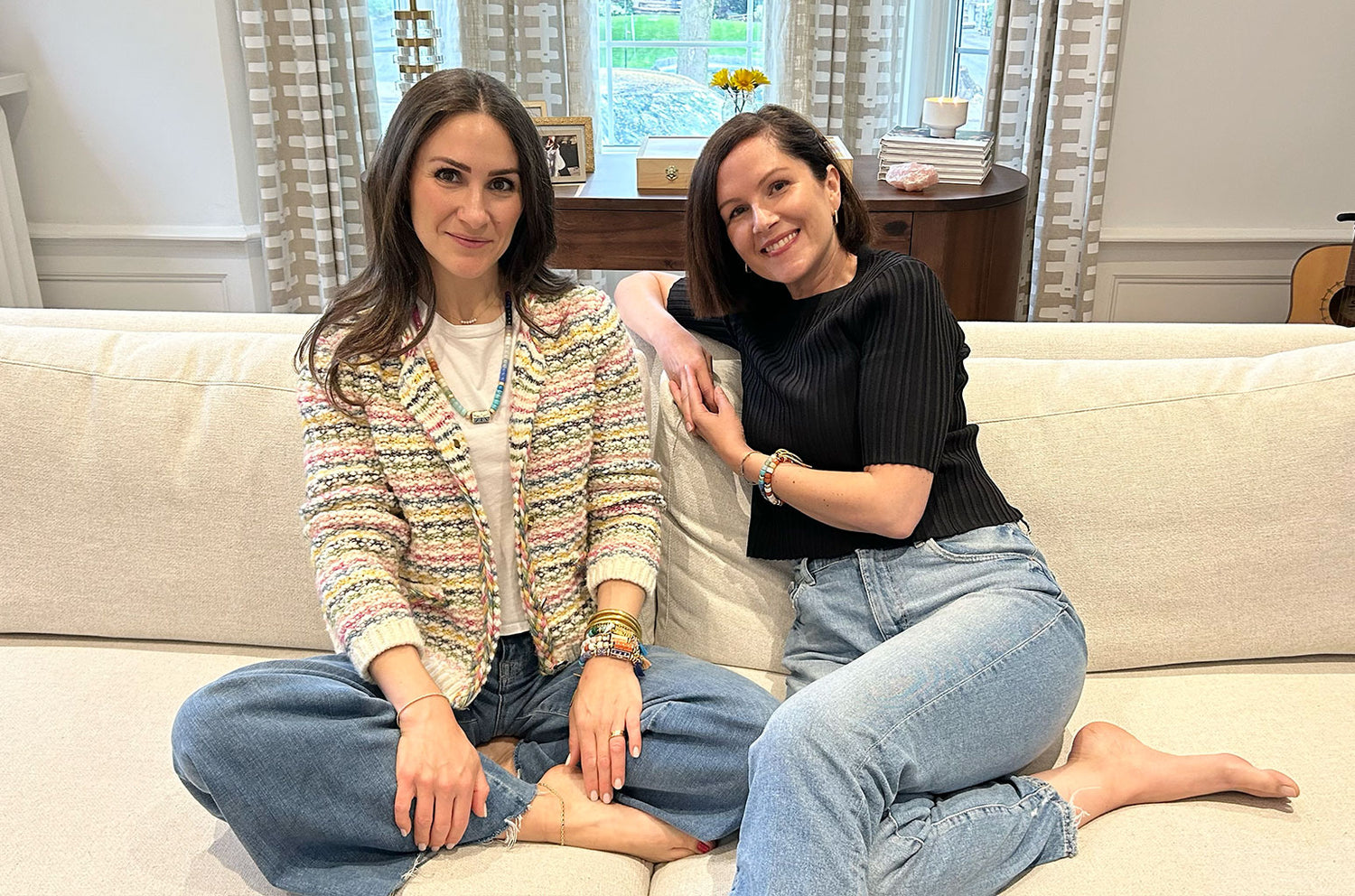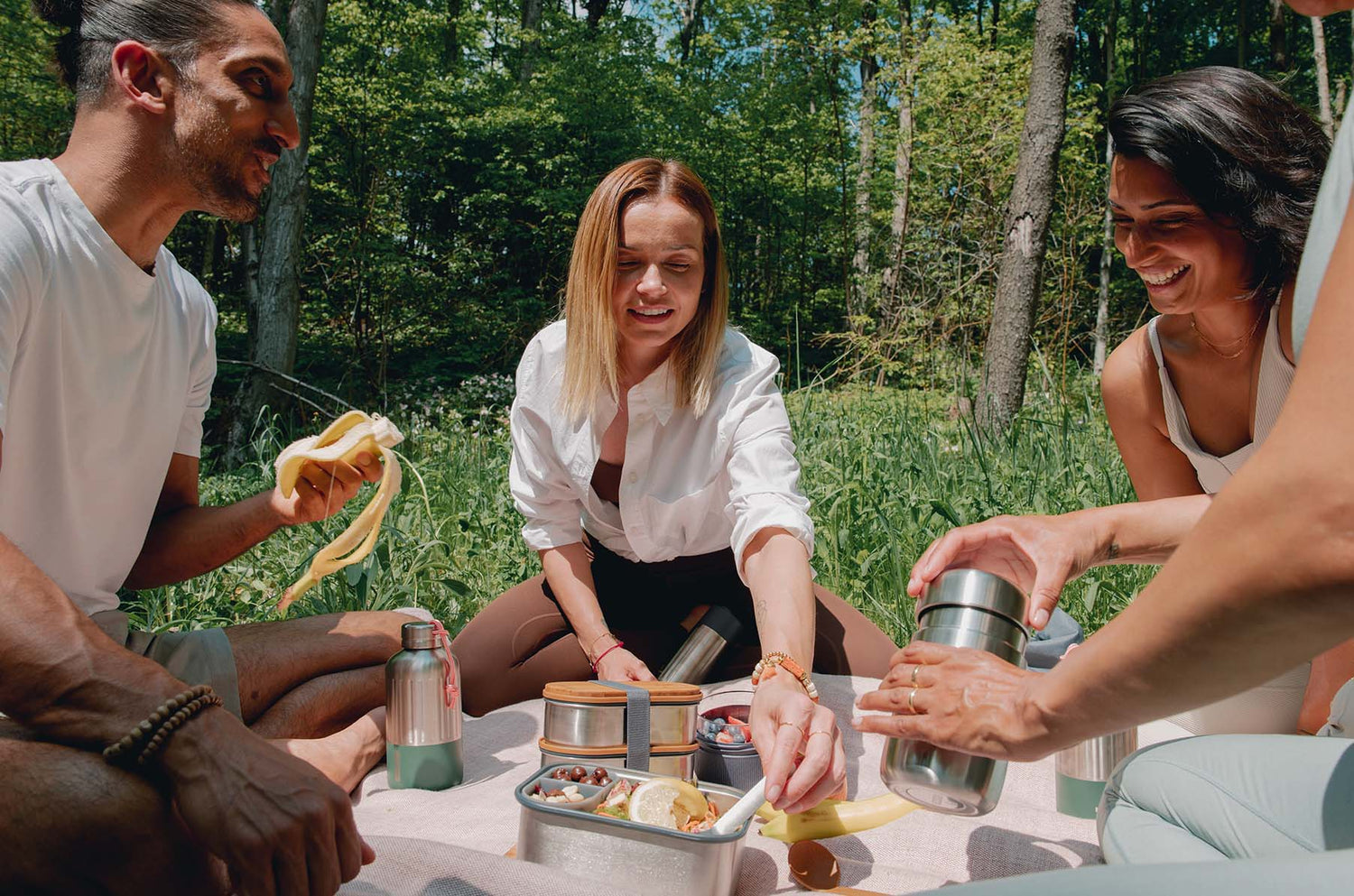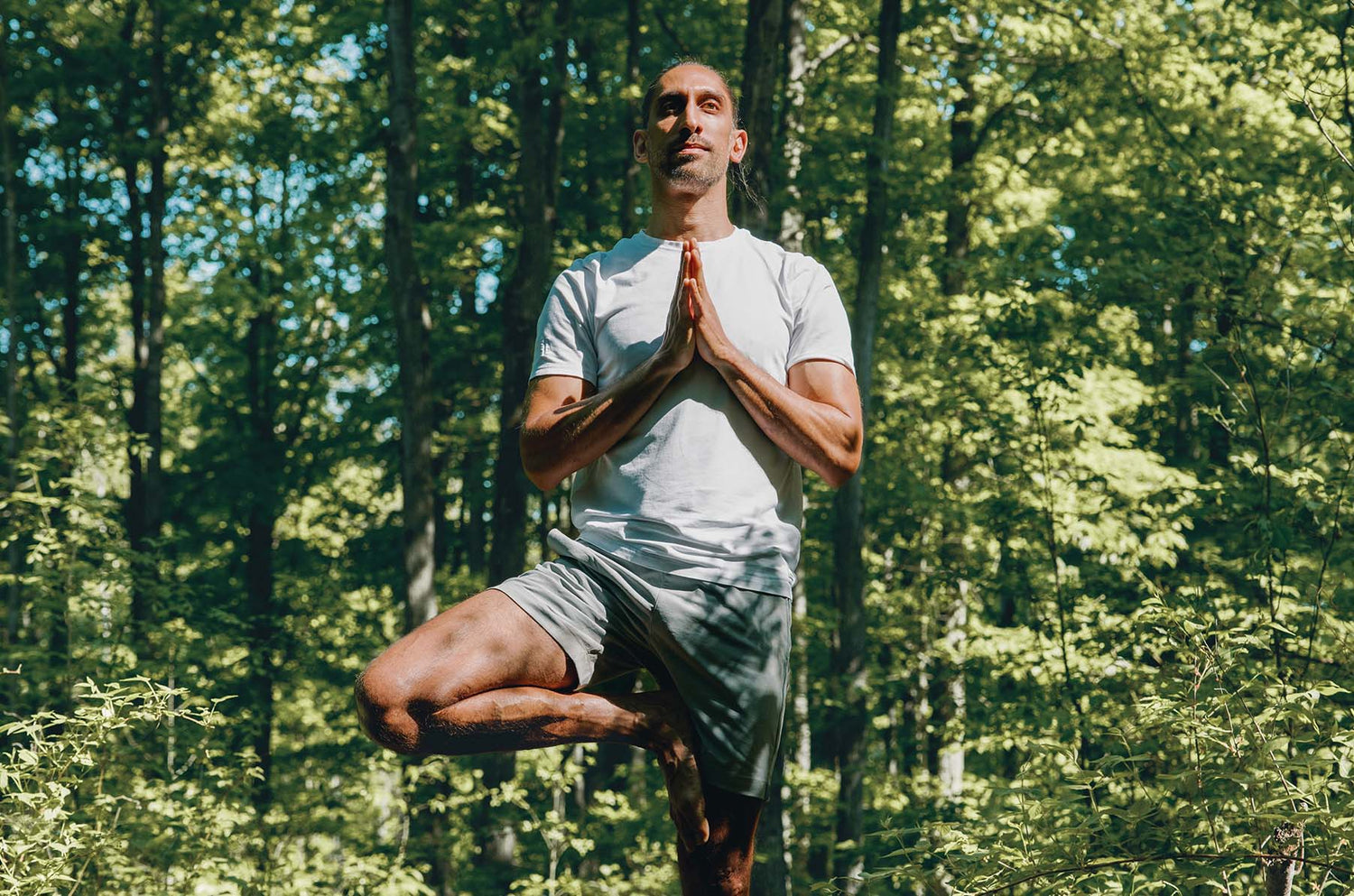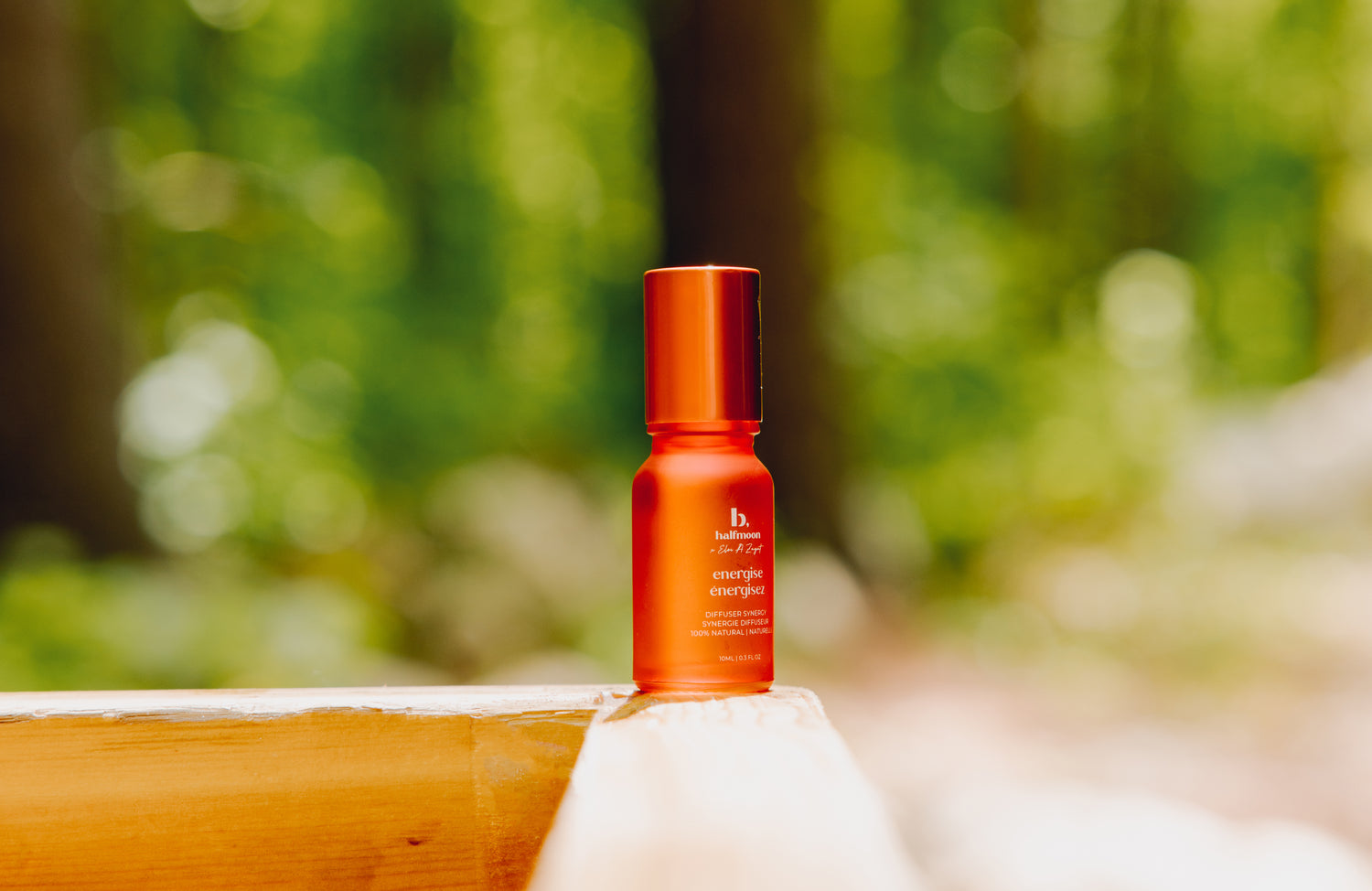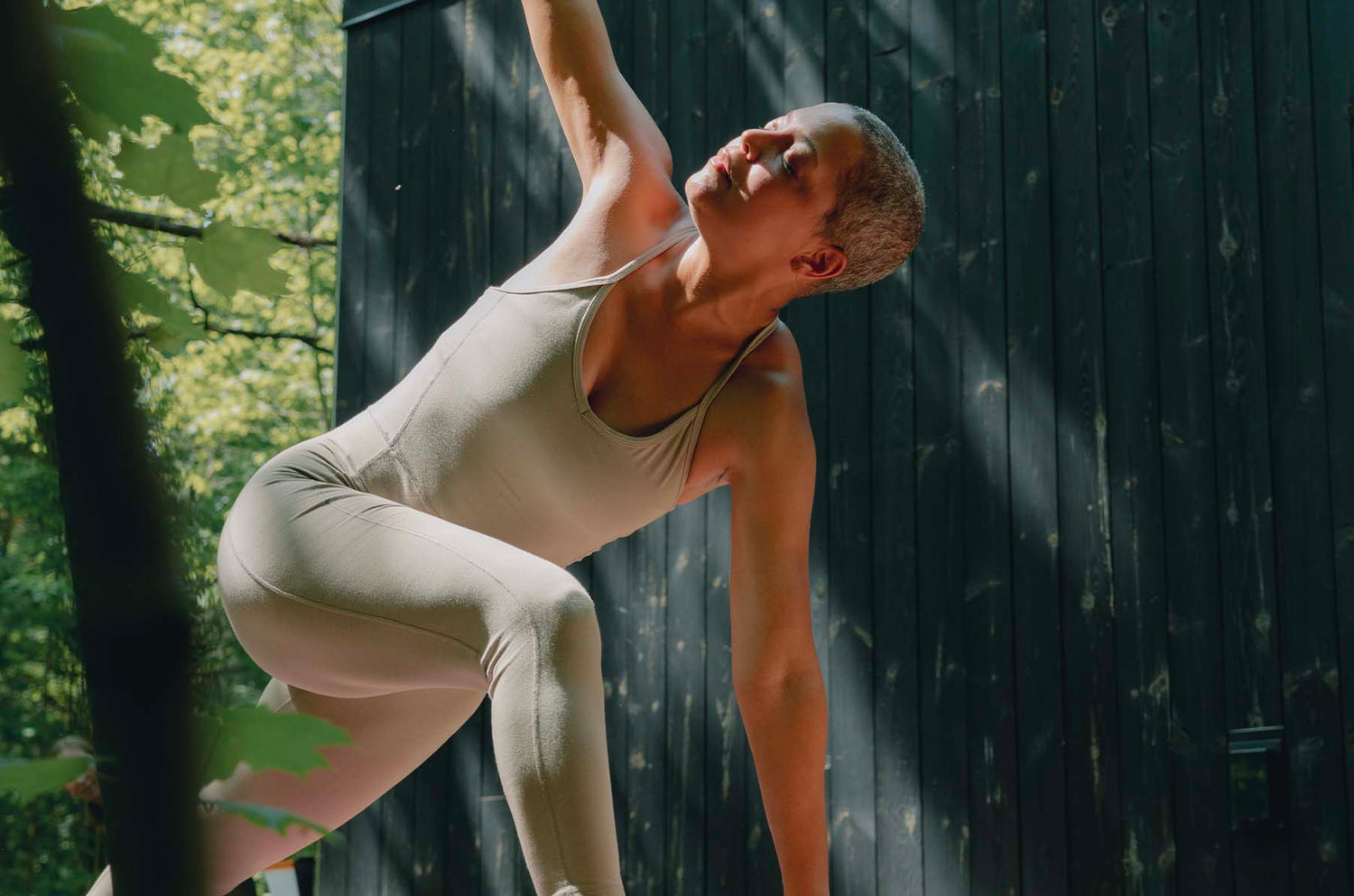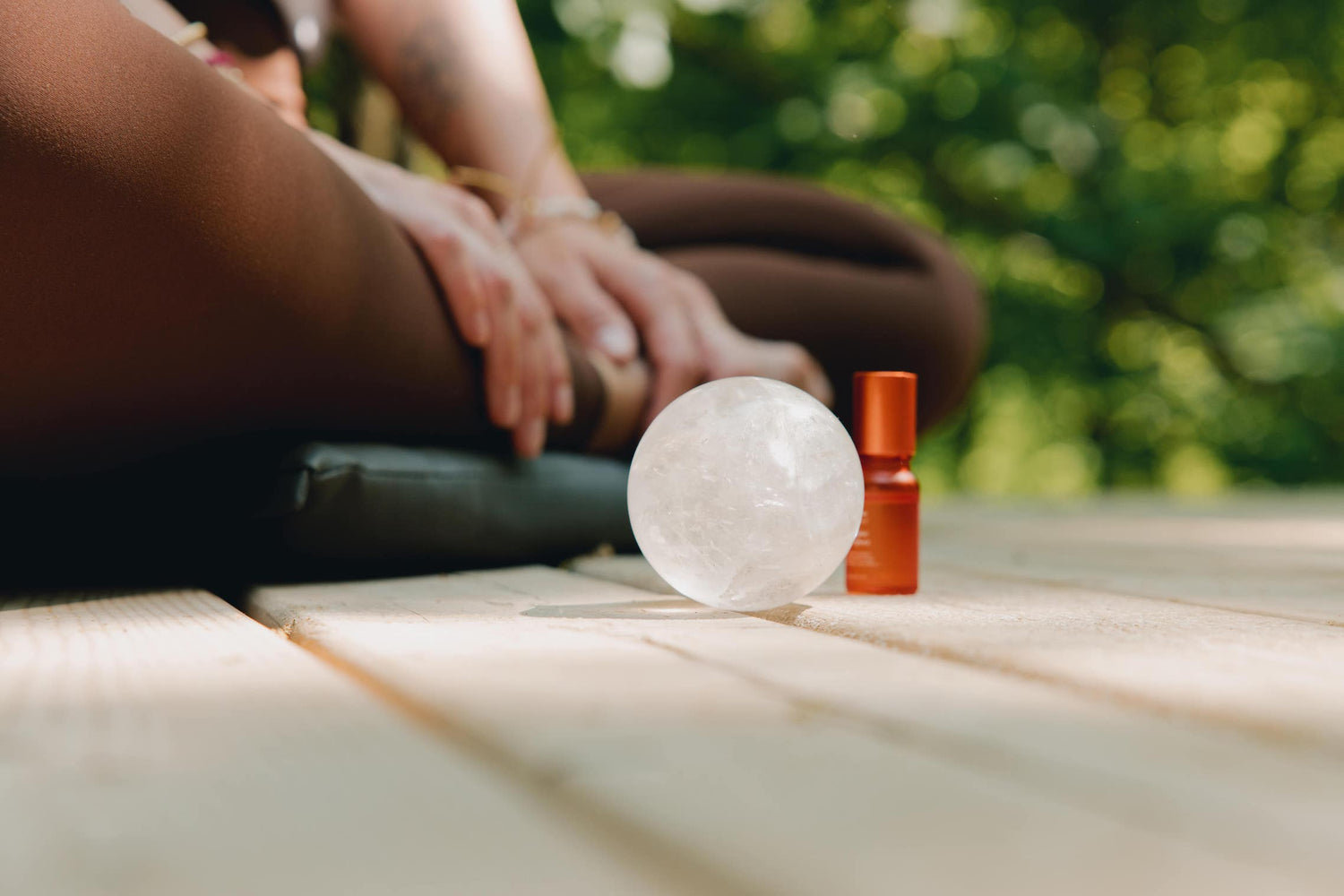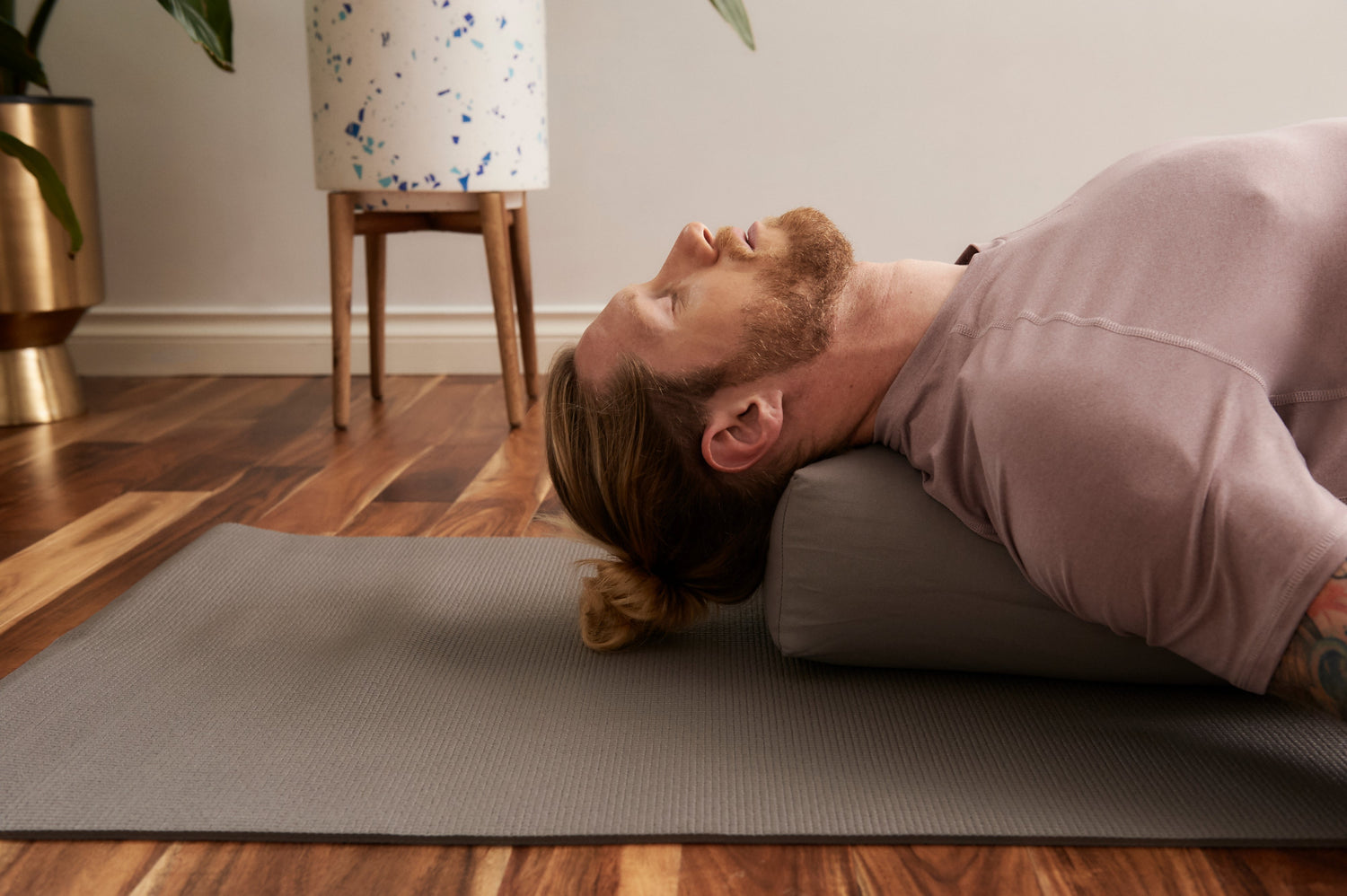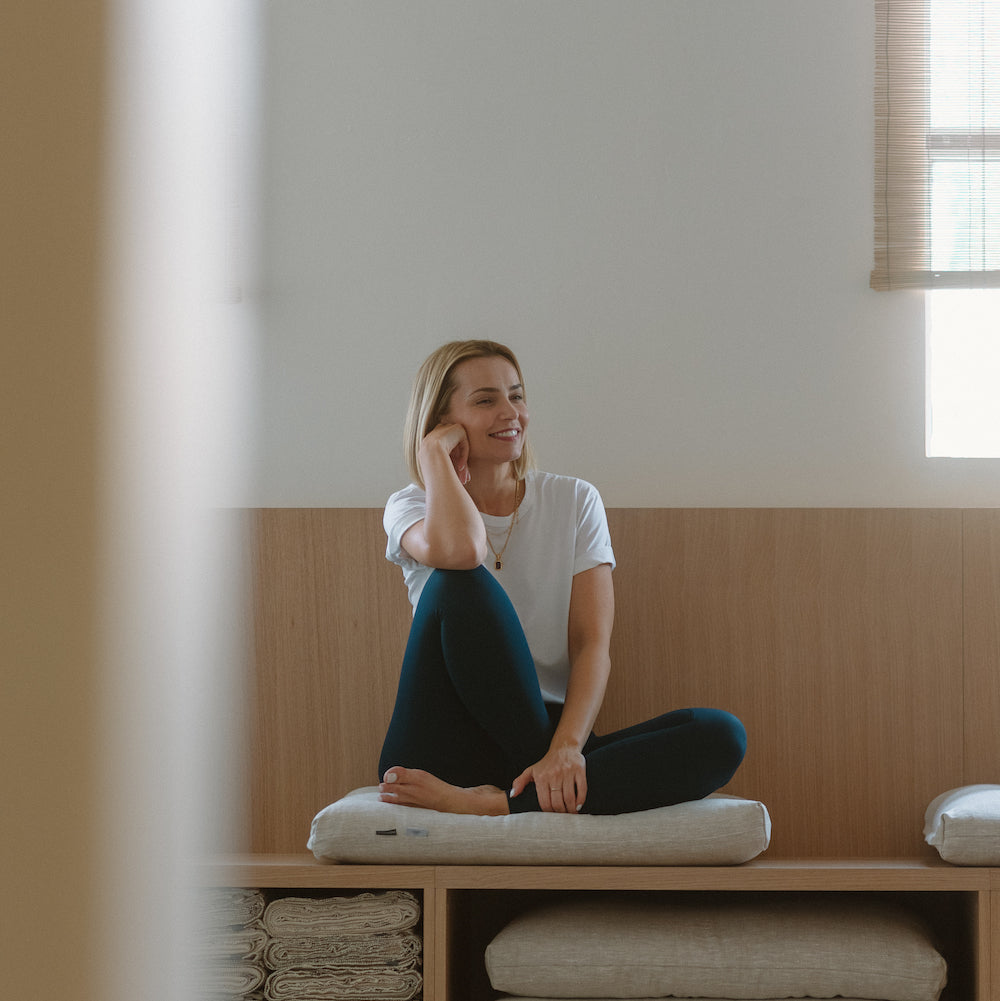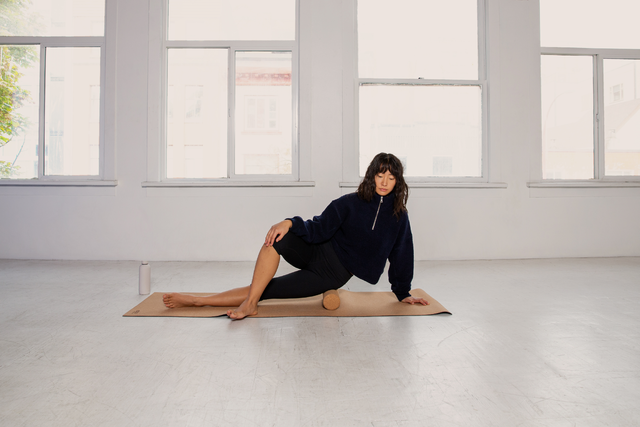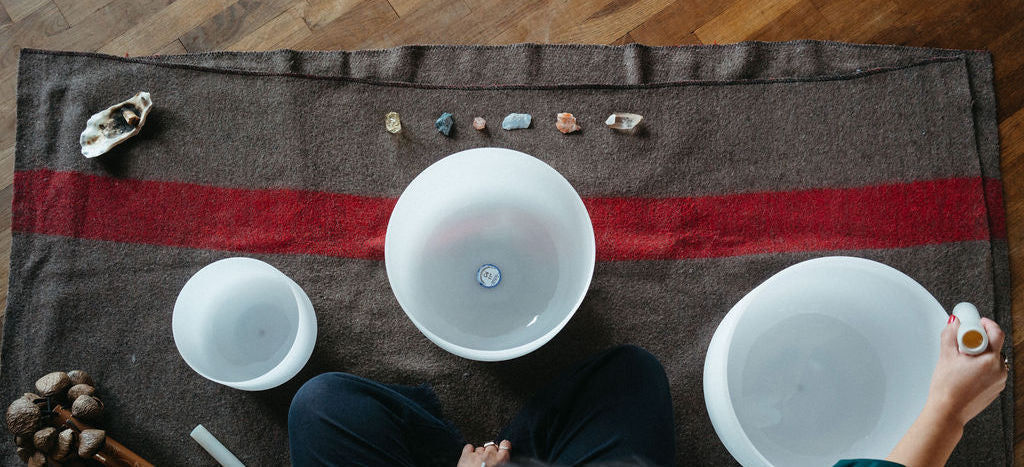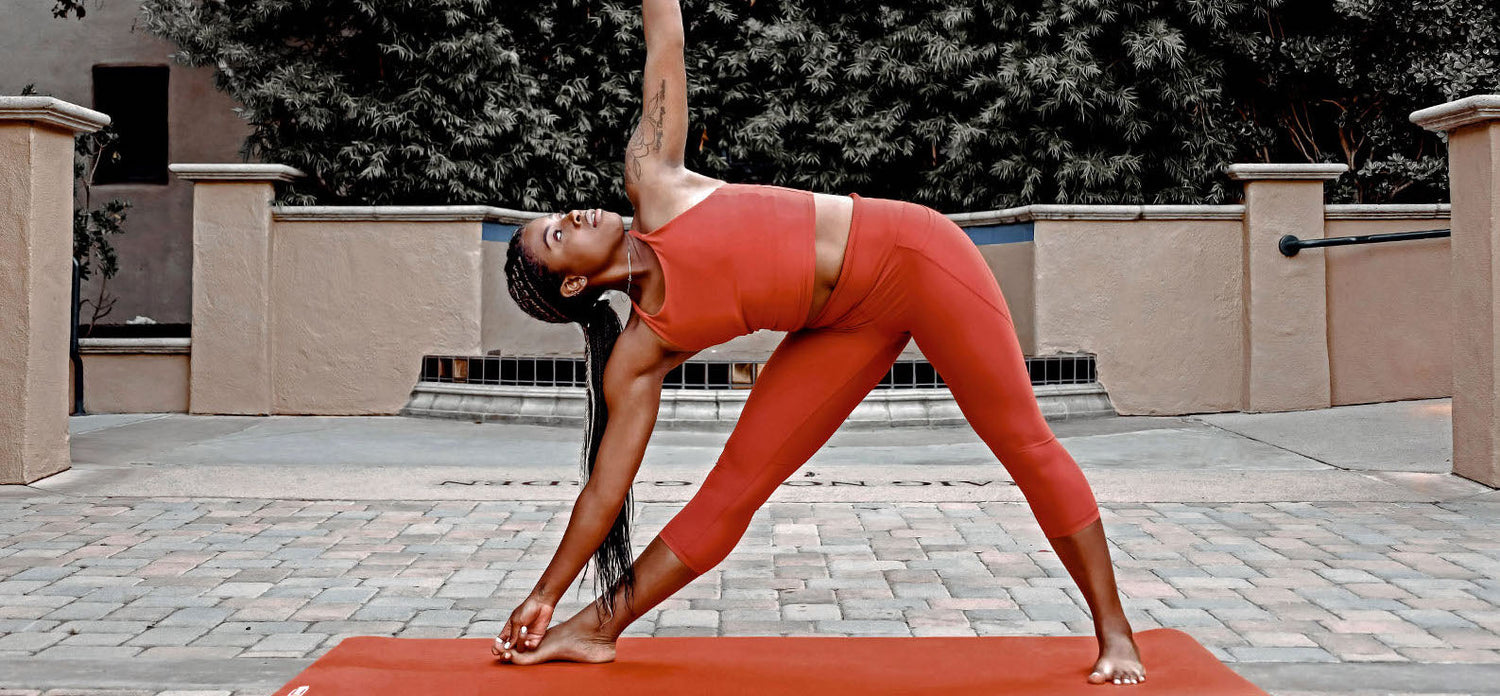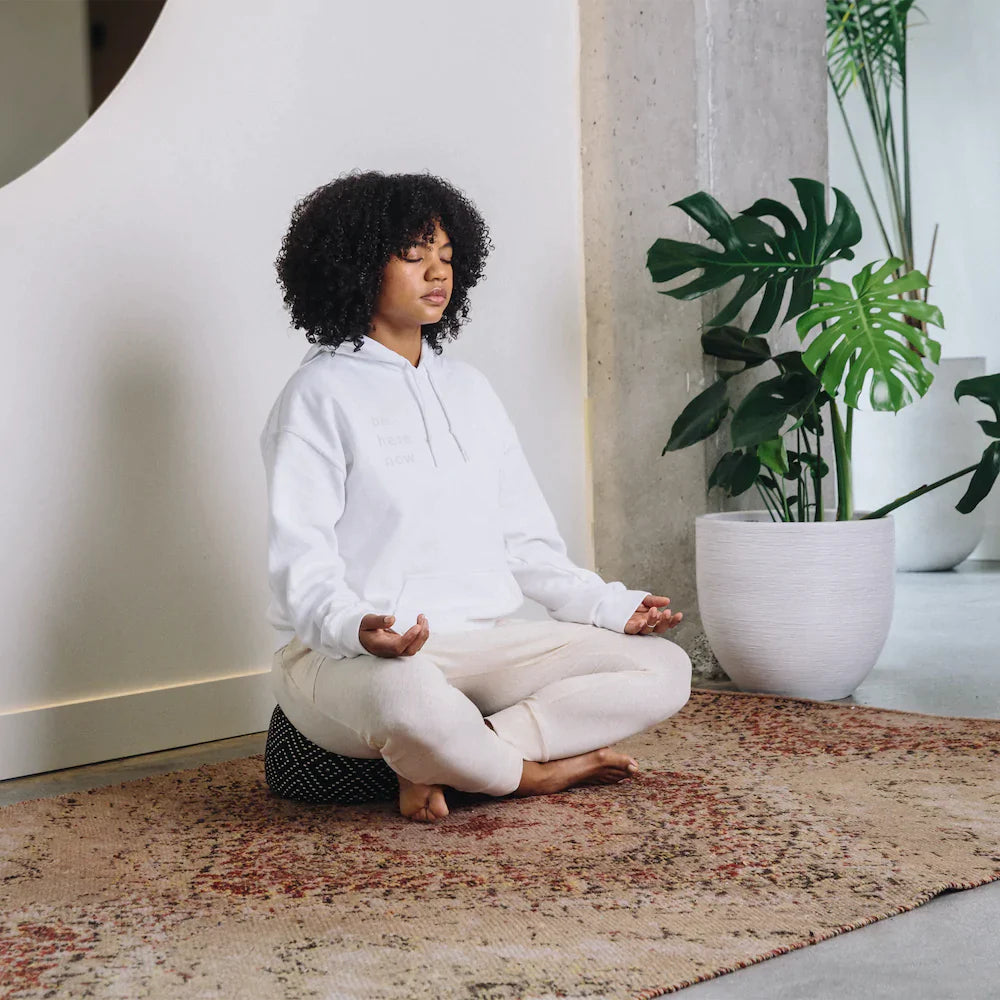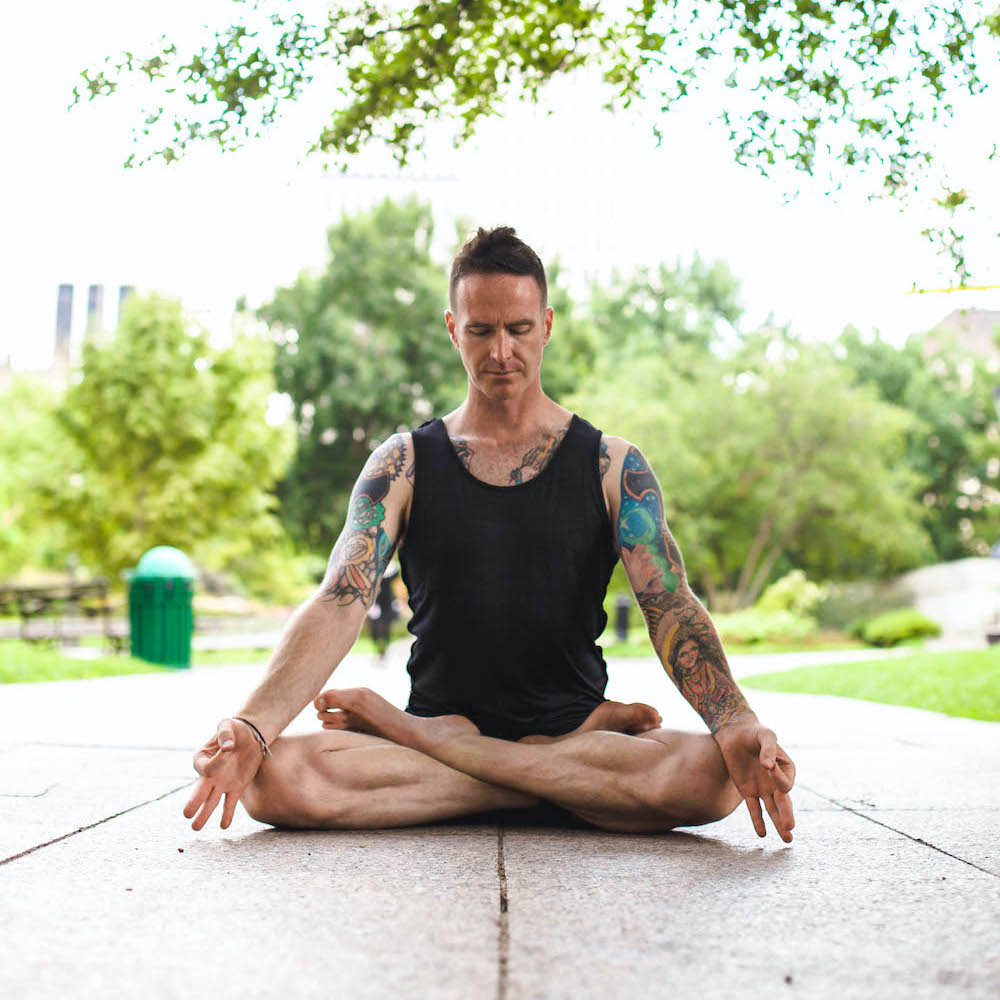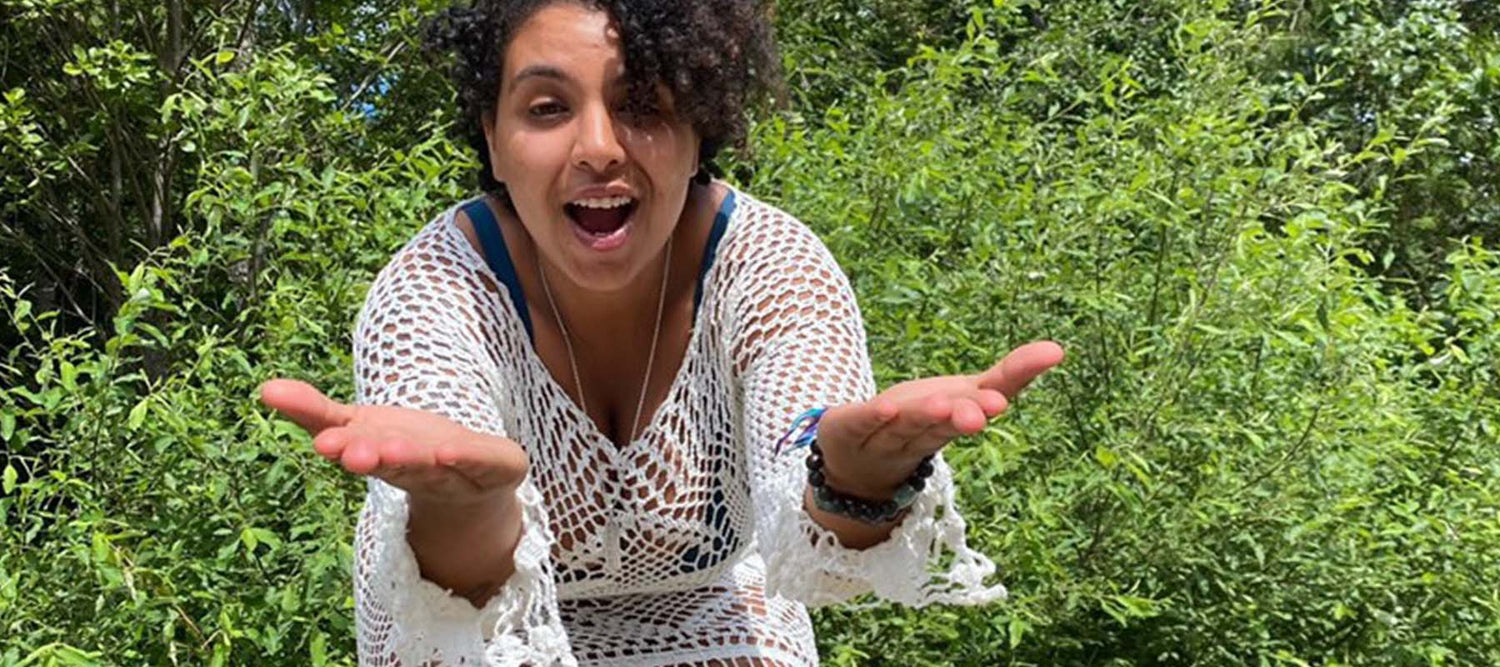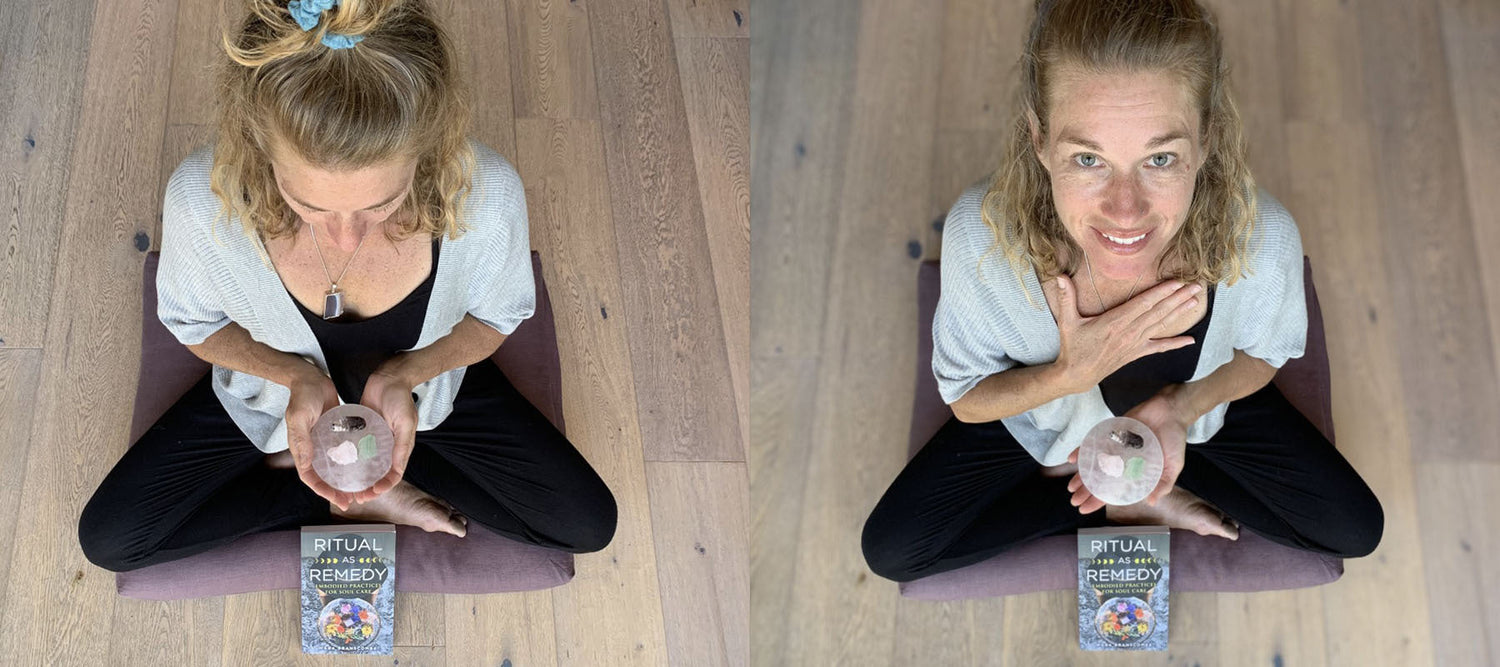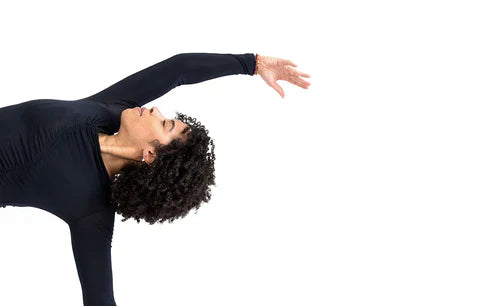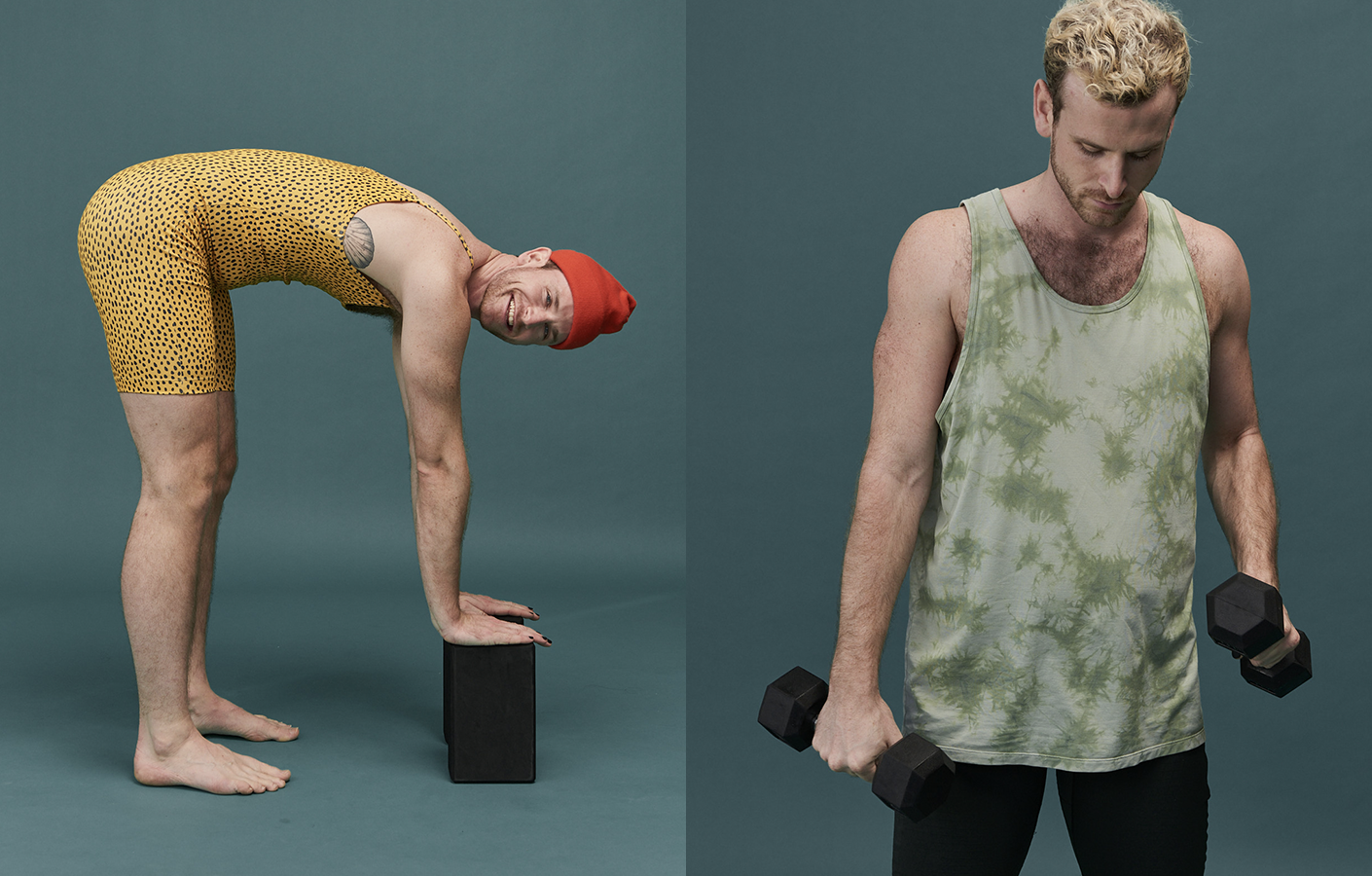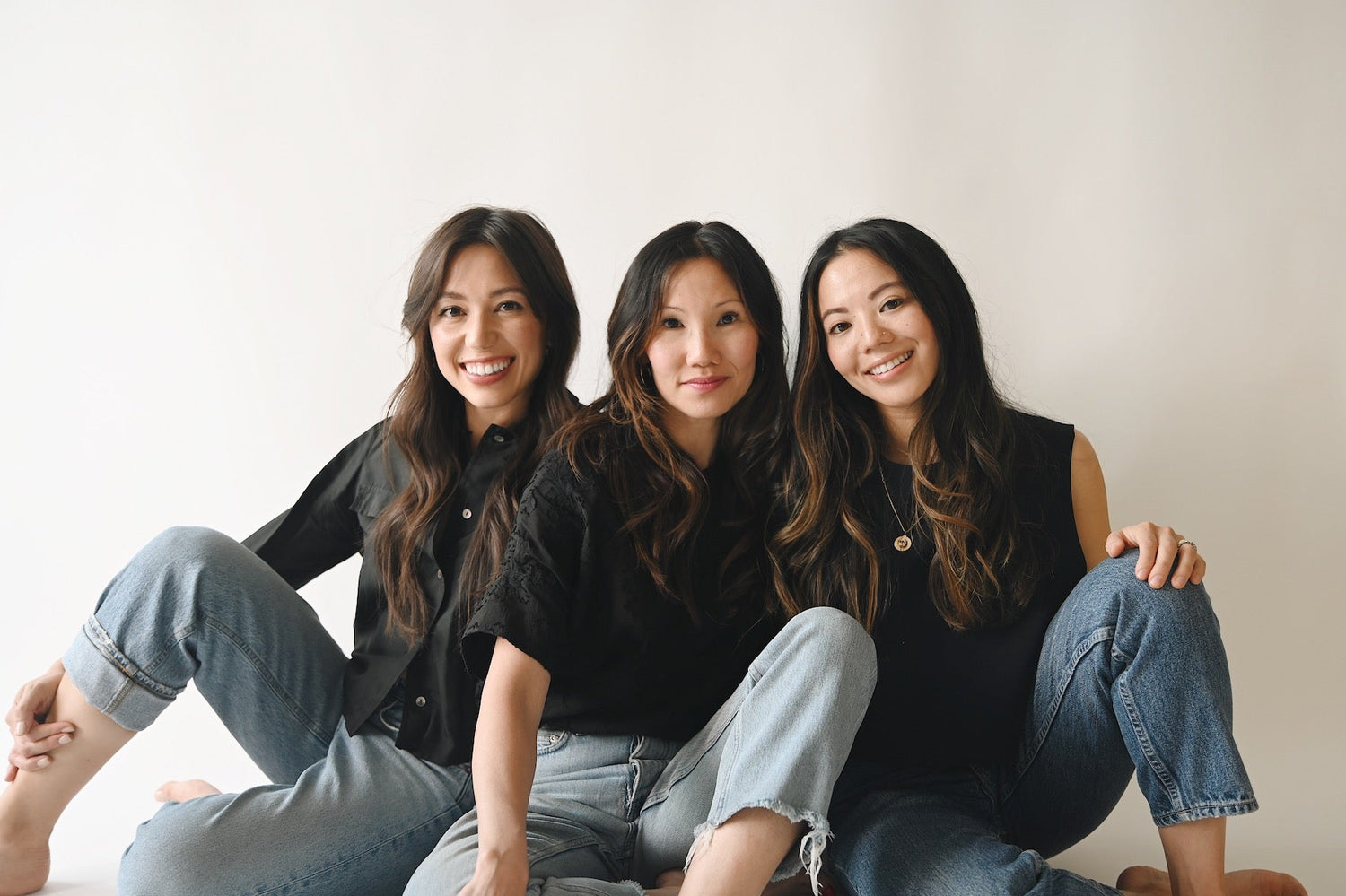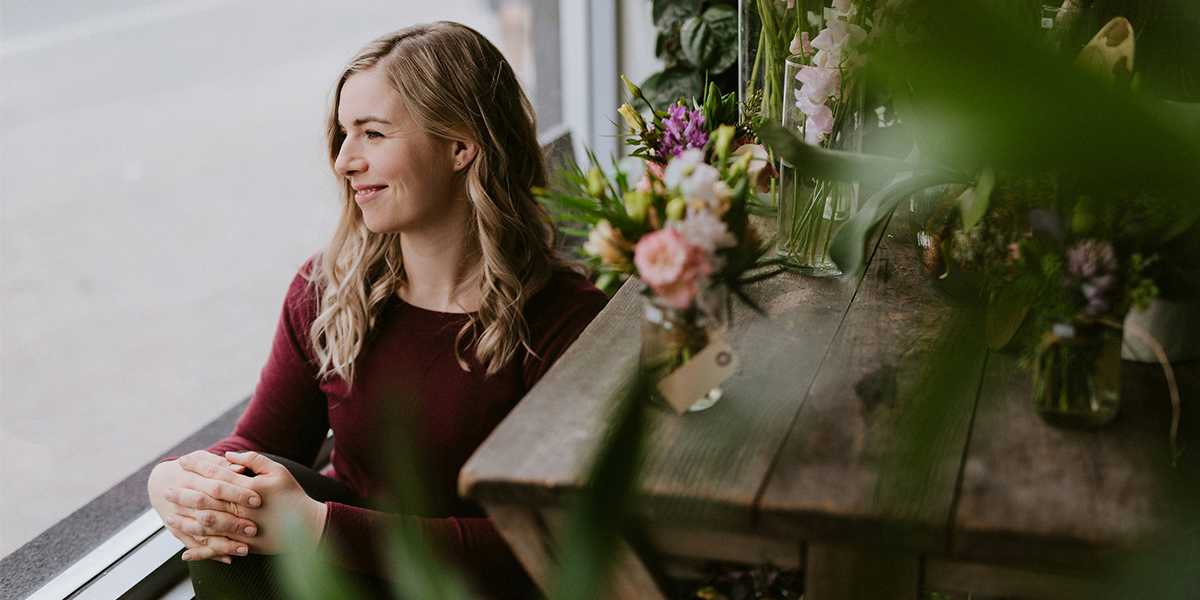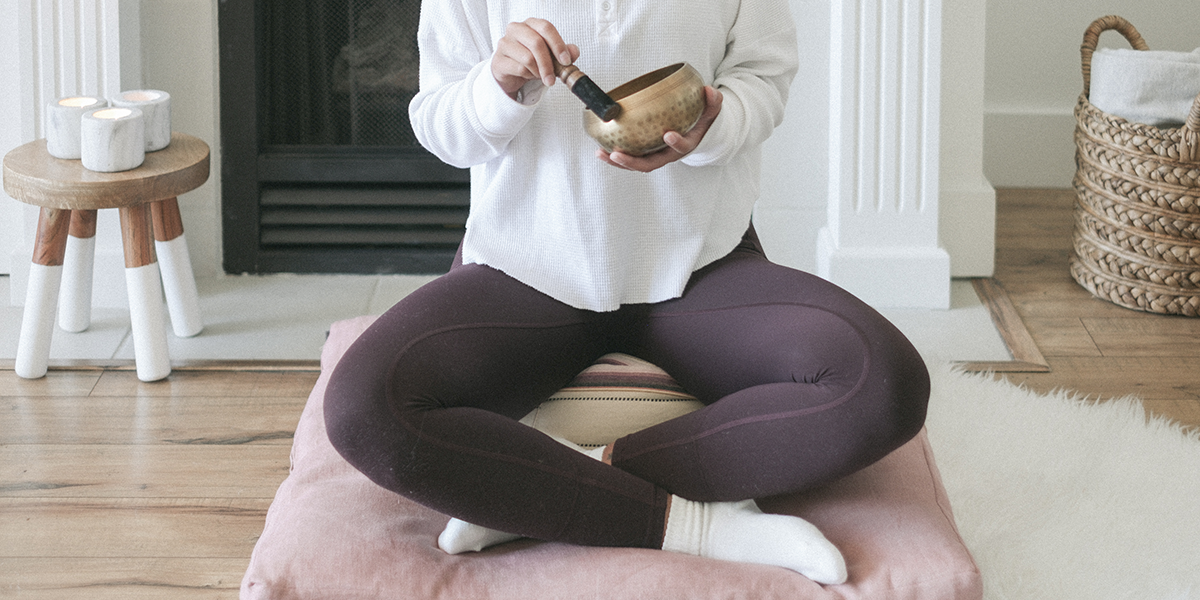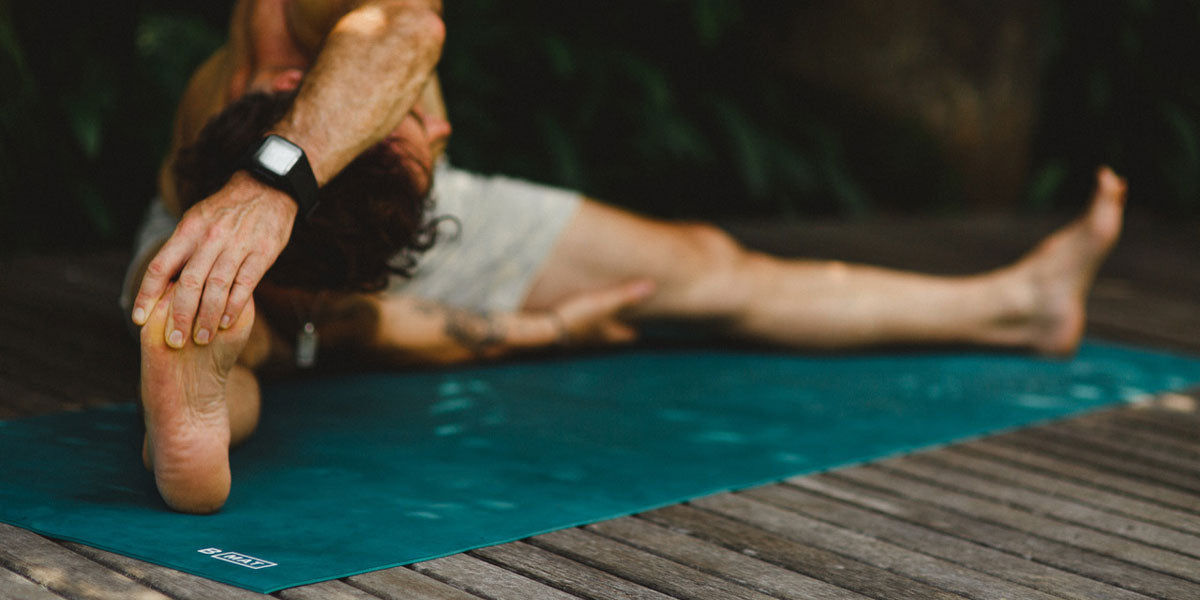Marie Françoise is a yoga instructor, runner, tennis player, Thai boxing practitioner, and an avid traveller. She is a person of the world. Originally from France, she made her way to Canada by way of the UK, California, and Asia. She shares the benefits of therapeutic yoga with her students to help them heal both body and mind.
We spoke to Marie Françoise to learn more about her yoga journey.

What initially inspired you to begin practicing yoga & meditation?
When we moved from France to Southern California 23 years ago, yoga was everywhere! I started practicing with a 60 year old yogi called Geo who taught me Ashtanga yoga. I remember the first class I took with him. I was fascinated by the ease at which he was doing the poses. He was a very mindful, gentle man who always focused on the therapeutic effects of the postures on the body and the mind.
At the time, I was also working out everyday with a trainer at the local gym and needless to say, Geo's words instantly resonated so much more with me than my trainer telling me to lift weights.

What types of wellness practices inspire you most?
We all need a yin and a yang, so yoga is a very complete wellness practice. However, I also include Thai boxing and running. There is a lot of impact in both sports and this is good for bone health. We need impact to keep our bones healthy.

What is unique about your yoga teaching style?
I have completed so much teacher training since I took my first 300 hrs in Montreal. I love to mix everything that I have learned over the years—Hatha, Vinyasa, Yin, restorative, and most of all, Yoga therapy—all in one class.
I bring diversity into my classes. There is a little bit of everything in one class. And, of course, the therapeutic effect of every pose and every breath that my students take is a must. The experience comes from within, my classes are a journey into this amazing microcosm that is inside of us that we don't see but we can feel, sense, visualize, listen to, compare, evaluate, protect, and release.

How does therapeutic yoga heal in your opinion?
When I started my first yoga Therapy training in India, from the beginning, we were told that our health depends on two things: our brain and our food.
When I started my second yoga therapy training in Montreal, we were told that our health depends on breath and alignment. Both trainings had one thing in common: homeostasis/balance. It is all a question of bringing balance into your body and your mind.
Yoga therapy is all about that: the awareness of our imbalances and how we bring everything back to homeostasis. Where our breath is at the center. I, most of the time, start with this when I meet my clients 1-on-1 for a session of yoga therapy.

The way we breathe defines our physical health, mental health, gut health, muscle health, heart, lungs, lymphatic system, and digestive system. Because everything is connected, we take it into account as a whole and then we work on the posture starting with alignment, then moving on to different poses.
Yoga therapy is not about performance, it is about going deep into the tissues with minimal postures. My students learn that less is more. They gradually start to understand themselves in their body and mind, so that they know their limits and slowly start to realize that it is ok to pause, it’s ok to do half the posture, and it’s ok to take care of yourself.
Therapeutic yoga heals because it is about changing your habits/patterns, it is the everyday awareness of what you do and why you do that heals. The power of the mind is essential.

Can you tell us about the practice of Yoga Nidra & the benefits of this type of yoga?
Yoga Nidra is an incredible practice, the effects on people are just unbelievable and I am still startled at the way my students react to it, especially the ones I take with me on my retreats. They do it every day. After just a few days they are able to find their quiet space in no time!
It is a 30-minute practice and starts with relaxation and the setting of a simple positive intention verbalized in your mind three times. Then we continue with more relaxation followed by a very accurate body scan. After that we go back and count each of our breaths, then we become conscious of the different sensations in our body: hot/cold, heavy/light, happy/sad. And then comes the visualization, which is the part that changes every time, it is the most sought after moment of being for the people who practice because it takes you far away, it is a journey into your unconscious mind.
The purpose of the practice is to be able to talk to your unconscious mind after going through the process. You reach your "Alpha zone," which consists of the waves of your brain that bring you between your wakefulness and sleep states. While you are immersed in this state of "in between" you experience a state of bliss—a feeling that everything is perfect and in place. It’s a gentle heat that pervades all over your body to make you feel as if you are surrounded by velvet or anything soft that makes you feel secure.
And best of all, 30 minutes of Yoga Nidra equals 4 hours of sleep!

In your opinion, why is meditation so important for mental health?
A regular practice of meditation helps us find peace inside our body and our mind. It also helps us expand our neurotransmitters. Think of it like helping a tree grow more branches and twigs by watering it and giving it fertilizer, so it becomes stronger and more resilient. This is what meditation does to our mental being.
The more we are aware of how we function, how our feelings are directly connected to our body, how we can have control over our thoughts, regulate them and quiet them.

What shifts have you seen over the past few years around movement & wellness practice in the world?
These days, I find there is a greater demand for therapeutic yoga as an alternative way to address disease and discomfort. People are becoming more and more aware of what they can build, prevent, heal in their body and their mind. They are also more aware of the yin and the yang, of moving and doing cardio and strength but also finding ease and relaxation.

Do you have any tips for people who are new to yoga or meditation?
Tips for people who are new to yoga or meditation
- flexibility isn’t an obstacle
- use your props, they are essential and the best way to prevent injuries
- yoga IS for everyone
- be kind to yourself and be aware of your limits
- listen to your body
- perfection does not exist
For meditation:
- observe, explore, and be curious about yourself
- feel your emotions
- accept and do not try to erase any thought or emotion
- be patient

